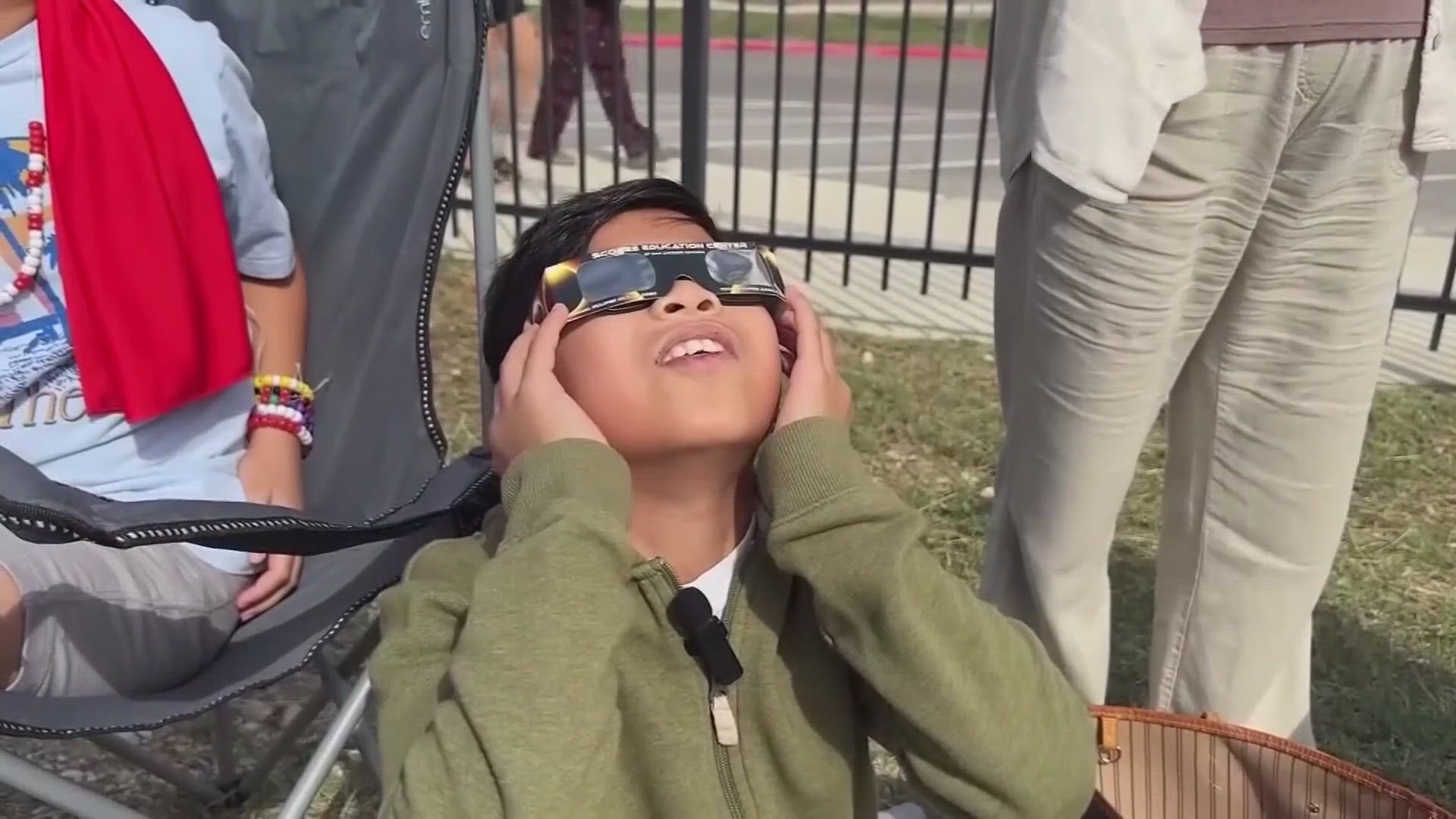WASHINGTON — There's only one month left until the next total solar eclipse darkens skies across North America.
The eclipse will emerge from Mexico's Pacific coast and cut diagonally across the U.S. from Texas to Maine and exit through eastern Canada.
Millions of Americans live in the 115-mile-wide path of totality and will experience complete darkness for a few minutes come April 8. The rest of the U.S. is still in for some fun as they will experience a partial solar eclipse.
Here are some interesting facts about total solar eclipses to prepare for the cosmic spectacle in April.
How often does a solar eclipse occur?
Solar eclipses of all kinds happen more frequently than one might think.
NASA breaks down the math to about 2,380 solar eclipses of all kinds every 1,000 years — or roughly 2-3 solar eclipses each year. For total solar eclipses, where the moon completely covers the sun, it works out to two eclipses every three years.
How fast is a total solar eclipse?
The duration of the solar eclipse all depends on your location. The more center you are to the path of totality, the longer the eclipse will last.
NASA says the longest duration of totality is expected to be four minutes and 28 seconds in Torreon, Mexico. Most of the cities inside the path of totality will see the eclipse last between three and a half minutes to four total minutes - that's almost twice as long as the last U.S. total solar eclipse in 2017.
By a cosmic stroke of luck, the moon will make the month’s closest approach to Earth the day before the total solar eclipse. That puts the moon just 223,000 miles away on eclipse day. The moon will appear slightly bigger in the sky thanks to that proximity, resulting in an especially long period of sun-blocked darkness.
When a closer moon pairs up with a more distant sun, totality can last as long as an astounding 7 1/2 minutes. The last time the world saw more than seven minutes of totality was in 1973 over Africa. That won’t happen again until 2150 over the Pacific.
When is the next total solar eclipse after 2024?
North America won’t experience totality again until 2033, with Alaska getting sole dibs. Then that’s it until 2044, when totality will be confined to Western Canada, Montana and North Dakota.
There won’t be another U.S. eclipse, spanning coast to coast, until 2045. That one will stretch from Northern California all the way to Cape Canaveral, Florida.
Does it get colder during a total solar eclipse?
As the moon cover the sun, skies will darken as if it were dawn or dusk. As a result of blocked sunlight, temperatures will slightly cool.
Temperatures are expected to drop as much as 10 degrees Fahrenheit depending on cloud cover and humidity in your area, according to NASA.
Total solar eclipse can even mess with wildlife's perception of time.
During totality, some nocturnal animals may wake up as they think its nighttime. For nonnocturnal animals, they might think it's bedtime.
When was the last total solar eclipse in the US?
The last time the U.S. had a total solar eclipse from coast to coast was on Aug. 21, 2017.
More than 215 million U.S. adults viewed the total solar eclipse, either in person or virtually, according to NASA.
Why can't I look at the sun during a solar eclipse?
Our eyes are extremely sensitive to light and when exposed to direct sunlight, the retinal cells could be permanently damaged.
Even a slight direct glance at the sun could cause damage, so it's important to remember not to look at it directly without safe eyewear — even if partially covered by the moon.
Viewers should always wear eclipse glasses during any solar eclipse, especially if there is no moment of totality. The moments of complete darkness, once the moon fully covers the sun's daylight, are the only safe moments to view without special eye wear, NASA says.
Can I take a picture of the solar eclipse with my phone?
In short, yes, you can take pictures of the total solar eclipse with your smartphone -- as long as you have a solar filter between your camera and the sun.
It's especially important during partial and annular eclipses or in stages leading up to totality as viewing any part of the sun from an instrument without a solar filter may cause instant eye damage.
Telescopes, binoculars and cameras all must have solar filters during solar eclipses to protect them from the sunlight and heat. Additionally, it ensures you don't accidentally look into the sun through an unfiltered instrument, according to the American Astronomical Society.
Why don’t eclipses occur every new moon?
Due to the moon's "tilted" orbit, its shadow is constantly changing placement. Sometimes it's too low and other times it's too high above Earth.
Eclipses occur when its placement is just right.

